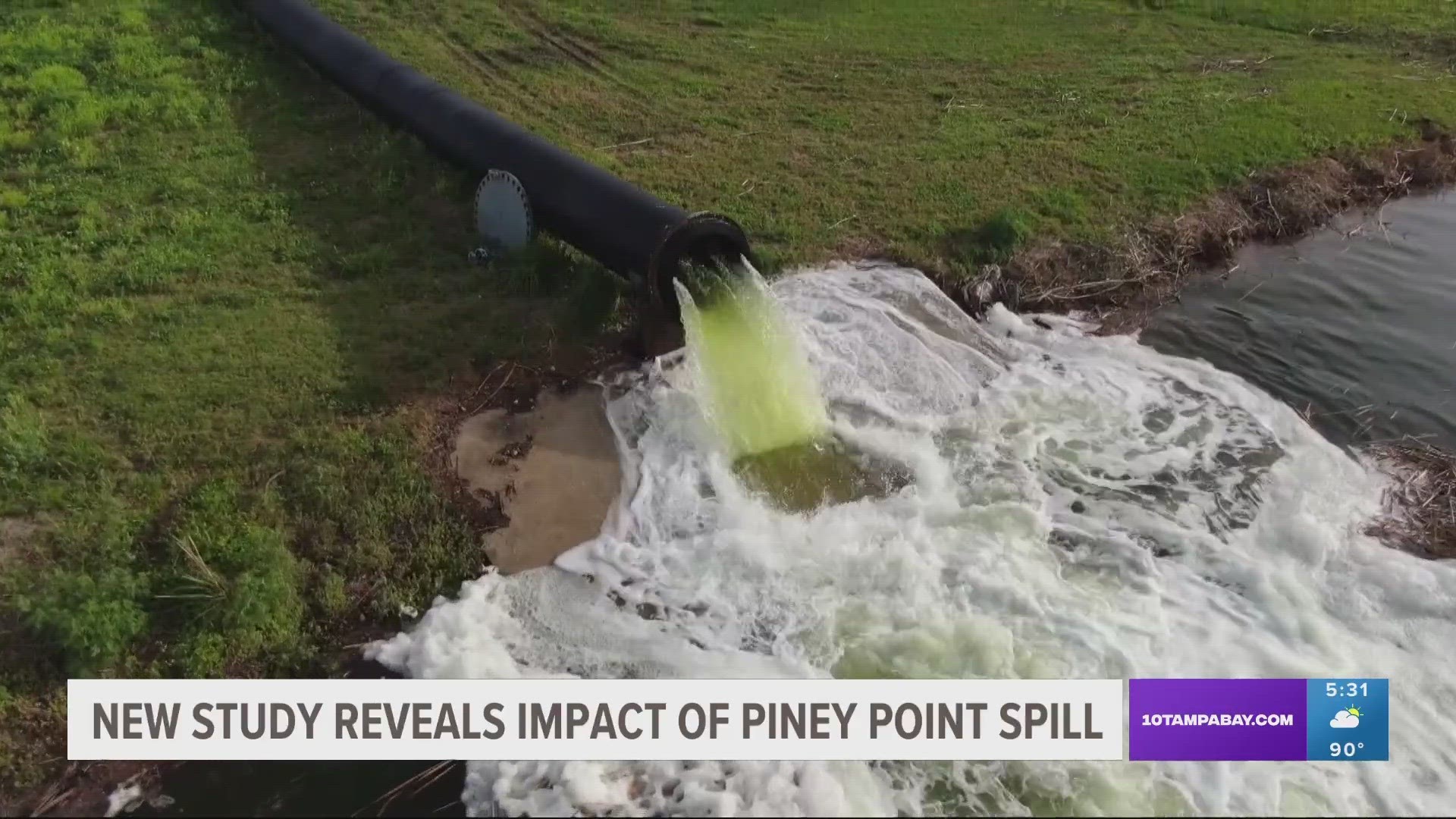MANATEE COUNTY, Fla. — We may have to wait until 2024 to finally close the book on the former Piney Point phosphate mining facility. That's what a plan from the facility's court-appointed receiver says.
The receiver's role has always been to present a plan for cleaning up and closing the facility to the state from the moment a judge appointed them last October. It's now up to the Florida Department of Environmental Protection to decide whether or not it meets the state's regulations.
As of the beginning of this year, the report says there are 397 million gallons of water across all four gypsum stacks — a majority of which is located in the retention pond that had a tear last year which caused the panic.
To remove all that wastewater, a majority of the heavy lifting must be done by a recently built deep-injection well. Manatee County commissioners approved of the well following the wastewater emergency at the facility that caused more than 210 million gallons of untreated wastewater to be sent directly into Tampa Bay.
Leaders say more than 200 million gallons of the remaining wastewater from Piney Point will be treated and sent 3,300 feet into the ground. Drilling officially began for the well in December 2021.
The receiver's plan says the remaining water will be removed by using an underdrain seepage collection system, evaporation sprinklers and draining pore water from the soft sediments. The plan also takes into account the average rainfall each year.
However, the receiver's plan makes it clear that it is all contingent on the deep injection well being completed. Manatee County has said the well will begin receiving water in 2023.
Once all the water is removed, the plan is to place a liner over the stacks and cover them under two feet of compacted soil.



